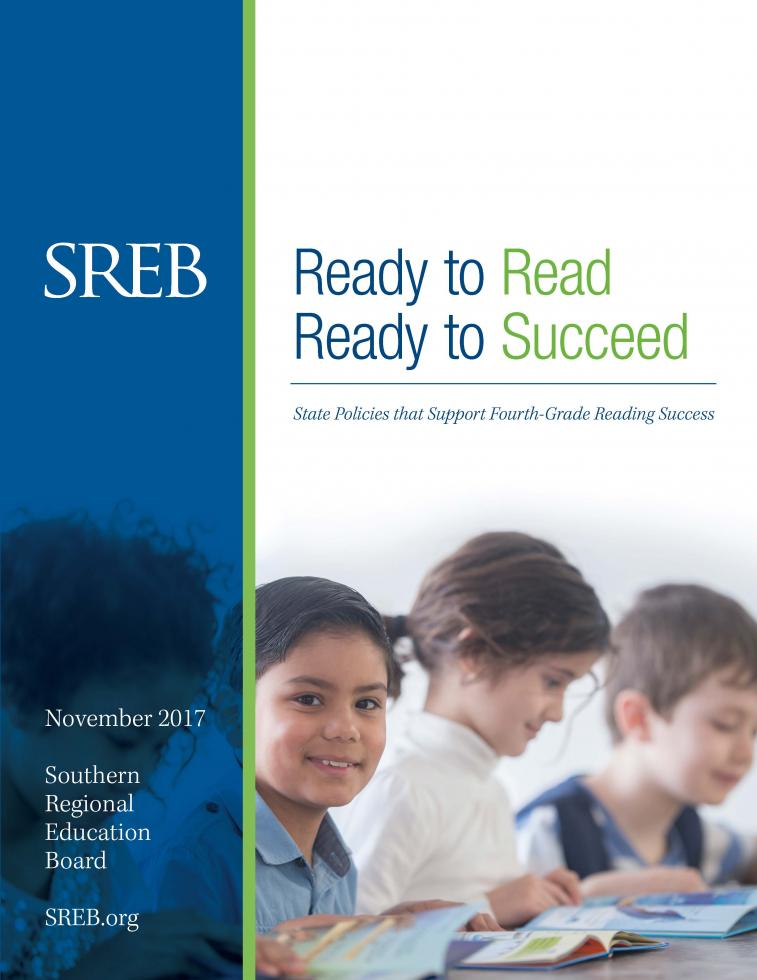New report recommends state actions on reading in the early grades
Far too few students read proficiently by 4th grade
Only a third of students in SREB states read at or above grade
level by the end of third grade — leaving two thirds at
risk of not graduating high school on time or succeeding in
college.
A new report from the Southern Regional Education Board offers
recommendations for state policy to help more students meet the
critical milestone of reading proficiently by fourth grade. The
research is clear, says Ready to Read, Ready to Succeed:
State Policies that Support Fourth-Grade
Reading. Children who are not strong readers by the
time they finish third grade and enter fourth face an uphill
battle during the school years that follow.
“Reading is job one,” said SREB President Dave Spence. “We need
to do everything we can to be sure students have this
foundational skill they need to keep learning through school,
into college and on the job.”
A third of students at risk
 Thirty-three percent of students in
the SREB region scored “Proficient” — solidly on grade level — in
2015, the most recent data available from the National Assessment
of Educational Progress. Another 33 percent, though, didn’t even
reach “Basic” — partial mastery for grade-level reading — which
means they have significant deficiencies in reading skills and
are likely to struggle in later grades.
Thirty-three percent of students in
the SREB region scored “Proficient” — solidly on grade level — in
2015, the most recent data available from the National Assessment
of Educational Progress. Another 33 percent, though, didn’t even
reach “Basic” — partial mastery for grade-level reading — which
means they have significant deficiencies in reading skills and
are likely to struggle in later grades.
Among students from low-income families, the numbers are even
more striking: Only 22 percent of fourth graders were at or above
“Proficient,” and 44 percent were below “Basic.” Students
who are not reading on grade level by this point are four times
more likely than their peers to drop out of high school.
Ready to Read, Ready to Succeed highlights practices that
work to identify and help struggling readers in the early grades.
It also reports, by SREB state, policies for:
- kindergarten attendance
- dyslexia screening
- third-grade retention
- teacher training and certification
Recommendations for states
What can states do to improve the number of students who read
proficiently by fourth grade? The report offers four
recommendations:
1. Promote kindergarten attendance for all
children. Be sure funding covers seats for all children from
low-income families and English language learners. High-quality
pre-K and kindergarten give children a boost and are especially
critical for these students.
2. Encourage schools to identify struggling readers
early. Then make sure schools use proven
interventions, such as one-on one tutoring, as early as possible
and as long as necessary to help them catch up. Getting the right
kind of help soon can make a big difference.
3. Review policies for promoting or
retaining third-grade students. Give them plenty of
chances to show reading proficiency — and be sure those
who aren’t proficient get intensive individual support. Simply
keeping students in third grade another year won’t improve their
achievement over the long run.
4. Strengthen teacher preparation so
new pre-K through third grade teachers are grounded in the
essential components of reading and can recognize dyslexia.
Dyslexia affects at least one in 10 people, but at least half are
not identified.
“There is no silver bullet in education. Together, these policies
and practices will help make sure more students in our states
have the reading skills they need to be successful,” said
Samantha Durrance, SREB policy analyst and author of the report.
“But it won’t happen overnight. States will need to support
schools in these efforts and sustain their commitment over the
long haul.”

